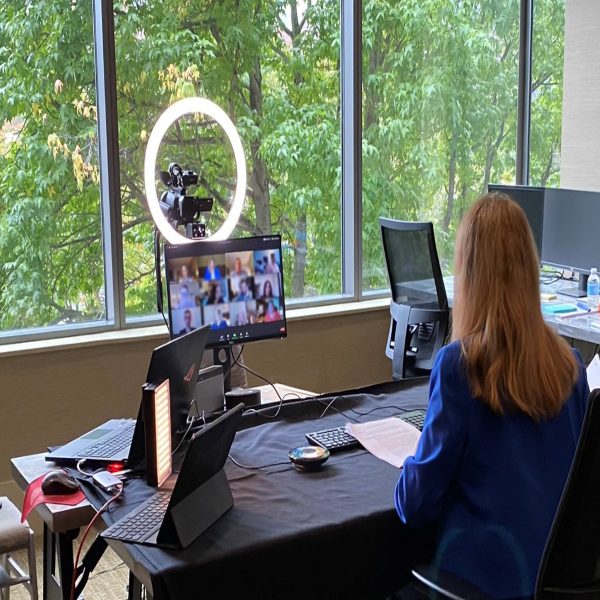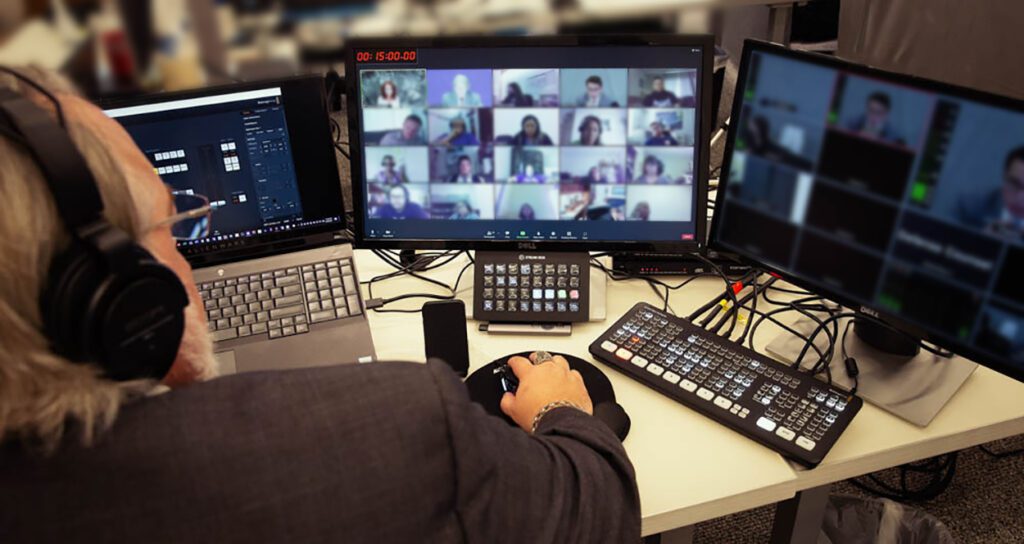We have developed proven best practices after assisting with numerous jury trials over the past two years. For those preparing to return to court in the coming months—whether it be online, in person, or a hybrid combination—we wanted to offer our top tips based on what we’ve personally encountered in these pandemic-era trials.
In Part 1, we begin with 10 ways to help you navigate jury selection in today’s virtual (or semi-virtual) environment.
Tips for Virtual Voir Dire & Jury Selection
1. Identify jurors’ general attitude toward the pandemic
Jurors who are especially fearful of contracting COVID-19 tend to lean in favor of the plaintiffs in a civil trial. It is to the defendants’ benefit to identify and excuse jurors who are anxious about serving. This finding, which we’ve identified in a recent analysis of both mock jurors and actual jurors, coincides with our previous research concerning the types of people most susceptible to plaintiffs’ reptile approach—those with state anxiety. Jurors’ attitudes about COVID-19 can often be obtained through social media research.
2. do not agree to excuse every juror who is in a high-risk group
Often these jurors are still willing to serve, especially after learning about the safety measures in place. Therefore, in juror questionnaires or during voir dire, jurors should be asked not just whether they have concerns or are in a high-risk group, but whether they are requesting to be excused because of it. Contrary to expectations, it is jurors in their 30s and 40s that have tended to report being the most fearful and unwilling to serve—not older jurors.
3. simplify jury data into individual summaries, face sheets, or cards for ease of use
When conducting individual follow-up with a juror during voir dire—and when making decisions about cause challenges and peremptory strikes—it is typically easier to have one summary sheet or “stats card” for each juror than to scroll through many columns within an Excel file. When jury data is provided by the court in an Excel format, the datasheet can be transferred via mail merge into individual juror summary sheets in Word, eliminating the need to hand-enter data.
4. when conducting voir dire by Zoom, create a professional-looking “set” in your presentation room
If given the option to conduct voir dire by Zoom from your home/office or within the trial courtroom, we suggest the former to avoid having to wear a mask, which can muffle your speech and make you less approachable.
When conducting jury selection from your home or office, be sure to sit in front of a window so the natural light shines towards you. Also, consider creating a “set” similar to ones used by a news anchor. This is easy to accomplish with a decent-sized conference room or home office. Simple lighting, an uncluttered background, and a camera connected to your computer will make a significant difference in how professional you appear.

If you’re using a built-in camera, we suggest putting a Bankers Box or similar item beneath your laptop to lift the camera to eye level. Or, if you prefer to stand, try putting your laptop on a chair on top of a table.
5. Be Prepared for the "Zoom Scramble"
As people turn their cameras on and off (and/or lose connections), the video boxes on the screen can shift around. Thus, any seating charts you make should be flexible. One method is to use index cards or large sticky notes, which can be shuffled as the video display changes. With the assistance of co-counsel or a jury consultant, you can also use a bulletin board on a wall behind your laptop, which would prevent you from having to look down as often.
Unless locked by the host, Zoom also allows you to move jurors’ video tiles in numerical order by juror number—a great feature to keep the questioning attorney organized and focused on the jurors, but one you’ll want to be sure to practice using ahead of time. Many attorneys find it helpful to have a presentation technology consultant with access to the display who can control the tiles, as it can be difficult for the questioning attorney to do so while also focusing on jurors’ answers.

6. Whether on Zoom or in person, aim for small groups of jurors
By Zoom, it is better to have several one-hour panels of eight to ten jurors than to voir dire 60-80 jurors simultaneously for several hours. When so many are on the call, jurors are reluctant to speak up, they’ll talk over one another too frequently, and there will be more moving video tiles to track. (Indeed, Zoom has a limit on how many people can be shown on one screen—any more than that will require the user to scroll through different windows, meaning you can easily miss jurors who raise their hands.)
In person, many of the same benefits apply, and smaller groups scheduled throughout the day will also help ensure social distancing can be maintained in smaller spaces. Lastly, smaller groups help prevent “hardship and cause cascades,” where jurors learn from others what they need to say to get excused.
7. Recommend that the Court instruct jurors to use headphones during voir dire by Zoom
This will help limit outside distractions and ensure the proceedings can be heard. It also prevents curious family members from listening in and making comments to the juror, which might not be heard by counsel if the juror is on mute.
Likewise, ask the court to recommend that jurors log in through a computer rather than a smartphone or tablet, if possible. Jurors tend to have difficulty holding the camera still and staying in frame when on their phones, and iPad users frequently struggle with getting their audio to work on the Zoom app.
8. Discuss with the judge and opposing counsel what will be done with jurors who have poor connections, show up late, or roam off camera
When participating in voir dire by Zoom, jurors have been tempted to join from their places of work—thus diverting their attention from the court process. It is also inevitable that some jurors will have connection issues. Decide ahead of time whether to dismiss those jurors or to try to reschedule them for a later panel, if possible. (For the latter, be sure to clarify whether that will affect the jurors’ place on the random order list.)
While each juror may be handled on a case-by-case basis, it is helpful to establish general rules up front to avoid unnecessary delays and surprises that might disrupt your virtual voir dire strategy.
9. Prior to voir dire by Zoom, recommend that the Court Clerk conduct brief “tech checks” with each prospective juror
This reduces technical problems that can prevent jurors from participating. If the court is unable to conduct advance tech checks, factor in 30-45 minutes to get all jurors online and ready before voir dire can begin.
10. Beware of putting jurors into online breakout rooms unsupervised
When there are sidebars or private juror follow-ups, someone from your firm or the court should be present in the breakout room. Otherwise, jurors can discuss the case or talk with witnesses/parties who may have also been left in the “waiting room.”
Prepare for Your Next Virtual Jury Selection
Of course, there will be special considerations if your jury selection process is fully remote compared to a hybrid combination with some in-person proceedings. These tips will help set you up for success in either scenario.
- Uncover juror attitudes towards the pandemic.
- Take a closer look at high-risk groups.
- Utilize individual juror summary sheets.
- Create a professional set in your home or office.
- Organize and monitor jurors on screen.
- Aim for small voir dire groups.
- Encourage headphones and discourage mobile devices.
- Establish ground rules to avoid delays.
- Check all technology in advance.
- Supervise the virtual waiting room.
Up Next
In Part 2 of our “Tips for Virtual Trials” series, we will offer guidance for effectively presenting remote witness testimony. In the meantime, we invite you to learn how our virtual support services can give you peace of mind—and the winning edge.
View this article on The National Law Review here: Tips for Virtual Trials (natlawreview.com)









